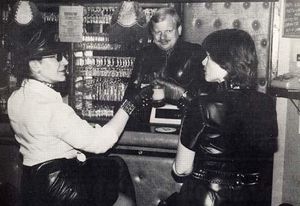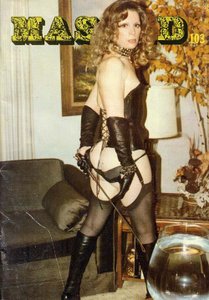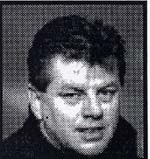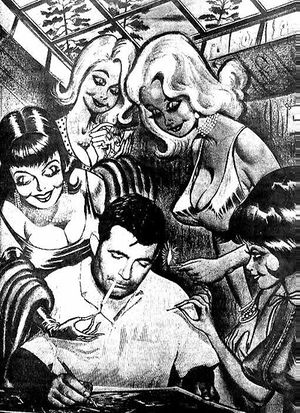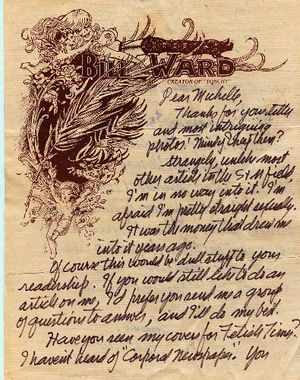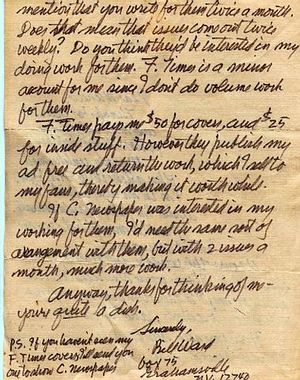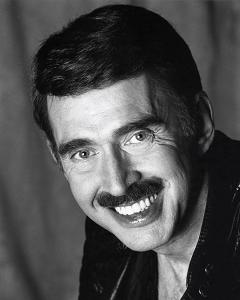Legends of Dominance - 62
Legends of Dominance by Mistress Michelle Peters et al. and posted with permission (All information herein is provided by author) Legends of Dominance Article Index |
Bert Wibo
- MassaD Magazine
Massad is a Dutch languaged BDSM magazine which is published by DDI's co-editor/publisher Bert Wibo. It is a bimonthly magazine which started way back in 1976 and has been reporting on the Dutch and European BDSM scene for over 25 years now. The magazine is in Dutch with stories by readers, reports on SM-studios, background information and lots of contact ads, both personal and professional. Every issue also features a comic by Coco, known for his work at Harmony - only in Massad Coco can take his fantasies to the limit and usually does. There is also a Massad website, which includes hundreds of nifty and handy toys. The access to the Massad website & webshop is free of charge. Check them out at www.massad.com
Bill Dasher
Bill Dasher was the publisher of the Guide Press, he published many magazines and newspapers in the 80's to the year 2000.
Bill Ward
Bill Ward discovered that drawing might be something more than a hobby at Ocean City, Maryland when he was seventeen. He earned enough painting pictures on other kids' jackets to support himself through the summer. And more than earning money, as Ward says, "what a fantastic way to meet girls." What better motivation could a young man want!
Ward enrolled in the Pratt Institute in Brooklyn. Right away, Ward started specializing. He drew girls. Ward took little advantage of attending one of the finest commercial art schools in the country. With the certain advent of war and the knowledge that he'd be going into the service when he turned nineteen, he neglected his studies and concentrated on girls and fraternity life. In his own opinion, he wasn't a good artist when he graduated in 1941.
Ward's first job after school was with a Manhattan art service, but this proved a major disappointment when he learned his work was to clean up for the illustrators. He soon managed to get himself fired from this job and found himself working for Jack Binder, drawing backgrounds for Fawcett's comic books, including Mr. Scarlet, Bullet Man, Ibis and The Shadow. Ward credits Binder with teaching him the real skills he needed to become one of the best comic book artists of the period.
Ward got his big break when he did an entire Captain Marvel book. He decided to try for a job at Quality, the top comic line at that time. His timing was perfect. Reed Crandall had just been drafted and Quality offered him Blackhawk. Ward was somewhat overwhelmed. He had only hoped to do a secondary story in one of their books. Instead he was replacing who was, in Ward's words, "the greatest comic book artist of them all." According to Ward, his training by Jack Binder had prepared him well for Blackhawk. All of his practice in inking paid off. Quality particularly liked his covers. Ward comments:
"I'm especially proud of Military No. 30, a shot of that silly Blackhawk plane coming at you, cannons firing, Blackhawk piloting, Chop-Chop waving his meat cleaver menacingly over his shoulder. I drew that idiotic plane (from the early Military Comics) for years before it was changed to a jet. I used to wonder what nut designed the damn thing. Of course it could never fly -- ridiculous to think so. A few years ago I was leafing through a copy of a 1942 Aerosphere that I had acquired. Imagine my astonishment . . .there it was, an actual photograph of that same silly plane! Reading on I found it was an experimental model, the Grumman Sky Rocket, that the army had rejected. Can you blame them? . . . but it must have at least flown!"
Ward was at the top of the comic book world, when as had happened to many others before him, he was drafted. After training, Ward was assigned to communications for an anti-aircraft unit at the Quonset Point Naval Air Base, R.I. His duties left him with plenty of spare time so he began laying out stories for Fawcett during his long night tours. A naval officer noticed his work and suggested he do a strip for the base paper. Ward did, and created Ack-Ack Amy. That strip eventually evolved to become the character for which he is best known, Torchy, the blonde bombshell.
Never again was he to create the classic Blackhawks that he did in 1941-42. His bold yet simple inking style was lost as the inkers butchered his pencilling. He and I were destined to go on doing Blackhawk this way for seven years:-
"Drawing Blackhawk was probably as difficult a job as there was in the comics. There were seven main characters and they had to be shown constantly, really overcrowding the panels. I envied the writers � they could type out 'Show all seven Blackhawks in a mêlée with the thugs' in probably ten seconds. Imagine how long it took me to draw it. One of the most difficult things I found about drawing the Blackhawk characters was their military hats. A hat has to look just right, if it doesn't it looks silly. There's no in-between. Agitated about pencilling and the length of time it took me, I developed a way of solving the hat problem. I had them all knocked off in their first fight, which usually occurred by the second page. Then for the rest of the story they would be bare headed. I got away with it for about six months, then, not some astute editor, but some damn smart aleck kid wrote George Brenner (the head editor at Quality), 'Why don't the Blackhawks get a new hatter? They don't seem to fit very well. They all get knocked off at the beginning of each story.' They really ripped into me over this. So in the next story the Blackhawks all had to swim underwater out to a submarine. You're right, I drew them swimming underwater with their hats on. 'All right, Ward, let's not overdo it,' George Brenner screamed into the phone."
Around 1946, Busy Arnold, Quality's publisher, asked Ward if he had any ideas for another story for Modern Comics. Ward suggested Torchy, the strip about the daffy blonde that he had created while he was in the Army. It quickly became a big success and even got its own book. Ward's particular talent for drawing women stood him in good stead in this period when romance comics became very popular. Ward was soon so busy doing the covers and lead stories for Quality's romance comics that he didn't have time for his own creation and Torchy was turned over to another talented artist, Gil Fox. But Ward's career in comics was nearly finished anyway. It was the early fifties, and Dr. Wertham's campaign to paint comics as bad for kids was having effects. Soon the diminished sales caused Quality to go out of business.
Ward found other work drawing cartoons for Abe Goodman's Humorama, and in 1954, at Cracked magazine where he continued for many years.
Reference: The Man Behind Torchy, by Bill Ward.
See also [ Bill Ward ]
- Personal Letter I Received
Chuck Renslow
In the early 1960s he opened the Gold Coast, one of the first openly gay businesses in Chicago and one of the first leather bars in the world. He also published ‘GayLife’, financially aided many gay rights efforts of the 1960s, 1970s, and 1980s, and has been active in city, state, and national Democratic Party politics. He co-founded International Mr. Leather contest and set up the Leather Museum and Archives.
A true pioneer in Chicago's gay and lesbian community, Chuck Renslow opened Kris Studio in 1954 and began publishing a variety of male physique magazines; he is considered one of the "old masters" of gay male photography in the United States.
In the early 1960s, Renslow opened the Gold Coast leather bar, one of the first openly gay establishments in Chicago and the nation. By the time it closed in 1987, the Gold Coast was internationally known as the oldest leather establishment in the world. Indeed, its international reputation prompted Renslow to establish another business enterprise.
International Mr. Leather, Inc.™ is an annual celebration and is recognized as the premier gathering of leatherpeople in the world; it has been estimated to now have an $10 million impact on Chicago tourism.
Renslow's activism and commitment have not been limited to leather. From the early days of his visible presence as a gay businessman, he understood his responsibilities to the larger gay and lesbian population. Renslow has been in the forefront of the political movement toward equal treatment and equal rights. In addition to actively organizing many of Chicago's most recognizable gay and lesbian institutions, he has served as a board member of numerous organizations on the local, national, and international levels. Renslow's involvement has helped to spotlight Chicago and to dispel the myth that all gay life takes place on either the East or West Coast.
As the publisher of GayLife, Renslow established a credible voice for Chicago's gay and lesbian community. Combining years of involvement in city and state politics with the then emerging gay and lesbian political presence, he laid much of the groundwork for the community's later achievements in civil rights and equal treatment. Renslow was instrumental in the attainment of numerous milestones, including the initial introduction of a Chicago gay and lesbian civil rights ordinance and the initial executive order banning discrimination in Chicago city government, as issued by Mayor Jane Byrne.
A man of spirituality and belief, he quietly supports the gay and lesbian community and other communities with financial assistance. He is often listed in various program books as Sponsor, Patron, Contributor, or Friend, and his financial and service commitments include most civil rights, environmental and health related causes in the United States, stretching far beyond the confines of the gay and lesbian community.
Renslow is the chief executive officer of Renslow Family Enterprises. He is a member of the Strike Against AIDS, Human Rights Campaign Fund, Metropolitan Business Association, Illinois Gay and Lesbian Task Force, National Gay and Lesbian Task Force, National Organization for Women, American Civil Liberties Union, NAACP, Chicago Association of Commerce and Industry, Uptown Chamber of Commerce, 46th Ward Advisory Council, and the 48th Ward Democratic Party Advisory Board.
He has long been active in Chicago's Democratic Party, serving as a precinct captain for eight years in the 43rd Ward, as a candidate for delegate to the 1980 Democratic National Convention, and within the 46th and 48th Ward Democratic Organizations.
http://www.glhalloffame.org/index.pl?todo=view_item&item=11
Chat rooms • What links here • Copyright info • Contact information • Category:Root
